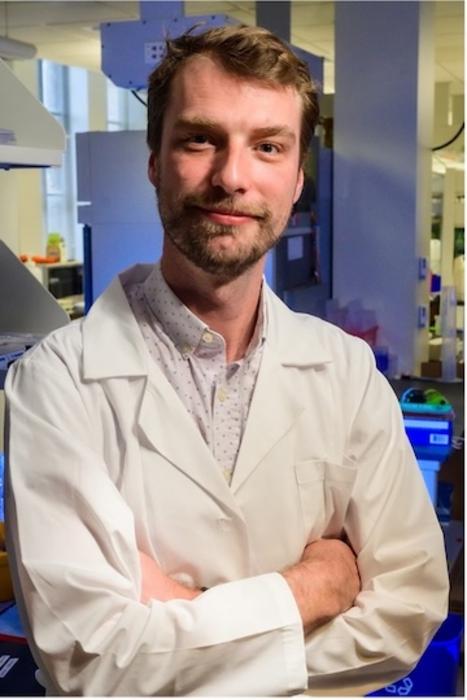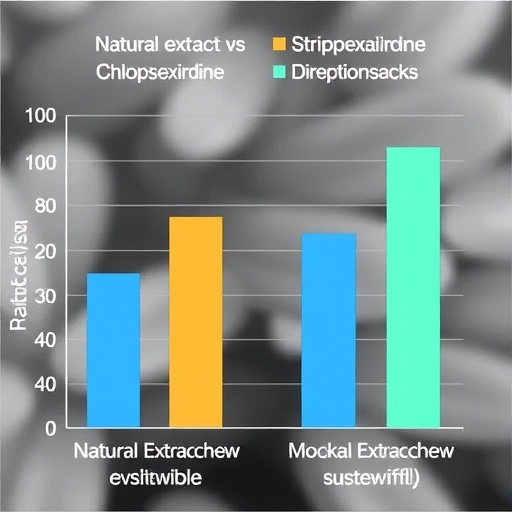In the intricate and often unseen world of bacteria, gene transfer plays a pivotal role in influencing cellular behavior, driving antibiotic resistance, and even reshaping entire ecosystems. Recently, a groundbreaking interdisciplinary team of researchers at Rice University has unveiled an innovative method for tracking these genetic exchanges within microbial communities using RNA “barcoding.” This novel approach promises to revolutionize our understanding of gene flow across species and its implications for fields such as medicine, biotechnology, and environmental science. The findings are set to be published in the prestigious journal Nature Biotechnology.
Traditionally, scientific investigations into gene transfer among bacteria have leveraged techniques such as labeling mobile genetic elements using fluorescent proteins. While these methods have provided insights, they are often constrained by the need to isolate and culture specific microbes within laboratory conditions. This restriction inherently limits the application of such methods, especially when studying complex microbial environments like wastewater treatment facilities or natural ecosystems. The innovative RNA-addressable modification (RAM) technique developed by the team at Rice University aims to transcend these obstacles by utilizing a synthetic catalytic RNA to accurately “barcode” ribosomal RNA within living cells.
The researchers contend that this technique directly addresses a major challenge in microbial ecology: the difficulty of mapping the microbial species involved in gene transfer events. Understanding how and which microbes exchange genetic material can unlock crucial information regarding antibiotic resistance patterns, ecological balancing, and the efficacy of biotechnological applications. James Chappell, associate professor of biosciences and bioengineering at Rice, emphasized the transformative potential of the RAM approach, stating it provides researchers with a direct means to document genetic information within the cells in question.
Designed by a collaborative effort among the research labs of Chappell, Joff Silberg, and Lauren Stadler, the RAM technique marks a significant advancement in synthetic biology. The team consisted of various talented researchers, including Matthew Dysart, Kiara Reyes Gamas, Lauren Gambill, Prashant Kalvapalle, Li Chieh Lu, and August Staubus. Their collective expertise led to the design of a small ribozyme-based RNA molecule capable of attaching a unique genetic barcode to the universally present 16S rRNA found in bacteria upon experiencing gene transfer.
By embedding genetic information into the 16S rRNA, which is integral to the ribosome and essential for protein synthesis, researchers gain unprecedented capability to track genetic exchanges without disturbing the natural habitat of the microbes involved. This technique provides a significant advantage; it utilizes established protocols and easily accessible analysis software pertinent to targeted sequencing of 16S rRNA—an established standard in bacterial species identification.
The implications of this research are vast and could be particularly impactful in addressing critical global health challenges, such as the escalating issue of antibiotic resistance. With an estimated 700,000 deaths annually attributed to drug-resistant infections, understanding how resistant genes propagate in complex environments like hospitals and wastewater systems becomes vitally important. By employing the RAM method, researchers can now monitor and analyze the transmission of mobile genetic elements across bacterial populations more effectively, potentially paving the way for improved strategies to combat resistant infections.
The experimental phase of this research involved introducing specially designed barcoding plasmids into E. coli donor bacteria to facilitate gene transfer within a model microbial community derived from wastewater. Over a span of 24 hours, the researchers extracted total RNA and sequenced the barcoded 16S rRNA. Remarkably, the team discovered that nearly half of the bacterial taxa present in the wastewater community had incorporated the plasmids, allowing for a detailed mapping of horizontal gene transfer events.
With the ability to track multiple genetic elements simultaneously, RAM holds promise for elucidating the dynamics of plasmid transfer among microbial communities. Understanding these interactions can unveil crucial insights into the evolutionary pressures and behaviors that shape microbial diversity and functionality in natural environments. The feasibility of using RAM to study gene transfer crosswise in bacterial populations may fundamentally enhance our comprehension of microbial ecology.
Moreover, beyond its application for studying antibiotic resistance, RAM could benefit fields such as environmental science and biotechnology. The technique could inform the engineering of microbial communities capable of degrading environmental pollutants efficiently while ensuring that beneficial genetic modifications remain contained. Furthermore, the capacity to adaptively program microbiomes for specialized tasks such as biofuel production or pharmaceutical synthesis relies on a robust understanding and controlled transfer of genetic material.
In summation, the RAM method marks a substantial leap forward in microbial genetics, addressing a critical gap in our understanding of gene transfer among bacteria. Researchers like Chappell, Silberg, and Stadler envision a future where RNA barcoding could serve as a universal tool for documenting not just gene transfer, but potentially a broader spectrum of microbial behaviors and interactions within their environments. As research unfolds, leveraging these insights may become crucial in combating global challenges, from public health threats posed by antibiotic resistance to utilizing microbes for advantageous synthetic biology applications.
Subject of Research: Gene transfer in microbial communities
Article Title: Information storage across a microbial community using universal RNA barcoding
News Publication Date: 18-Mar-2025
Web References: https://www.nature.com/articles/s41587-025-02593-0
References: [Nature Biotechnology DOI: 10.1038/s41587-025-02593-0]
Image Credits: Credit: Rice University
Keywords: RNA barcoding, gene transfer, microbial communities, antibiotic resistance, synthetic biology, environmental science
Tags: antibiotic resistance trackingenvironmental science applicationsgene transfer in bacteriagenetic exchange monitoringimplications for biotechnologyinnovative RNA techniquesinterdisciplinary scientific researchmicrobial ecology advancementsNature Biotechnology publicationribosomal RNA barcodingRice University research teamRNA barcoding system





